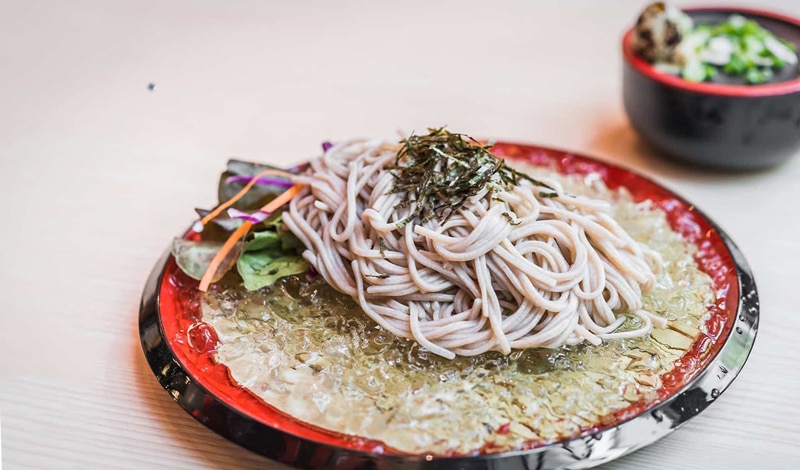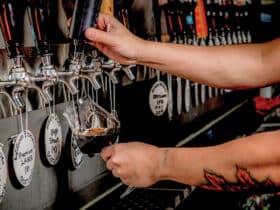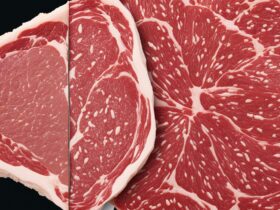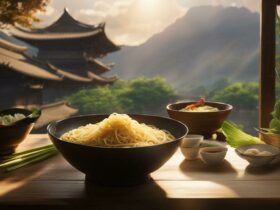Soba, a traditional Japanese noodle dish, has gained popularity worldwide for its unique flavor and health benefits. In this article, patricktopping will delve into the secrets of soba, exploring its history, preparation methods, nutritional value, and various ways to enjoy this delightful culinary creation.
The Origins of Soba
Soba has a rich history that dates back centuries in Japan. It is believed to have originated during the Nara period (710-794 AD). Initially, soba was consumed by the aristocracy and Buddhist monks due to its simplicity and nutritional value. Over time, it became more popular among the general population, evolving into a staple dish in Japanese cuisine.
Different Types of Soba Noodles
Soba noodles are made primarily from buckwheat flour, which gives them a distinctive nutty flavor. There are several variations of soba noodles, including:
- Juwari Soba: Made purely from buckwheat flour without any wheat additives.
- Nihachi Soba: Contains a mix of 80% buckwheat flour and 20% wheat flour.
- Sarashina Soba: Made from finely ground buckwheat flour, resulting in a delicate and light texture.
- Cha Soba: Infused with green tea powder, giving the noodles a vibrant green color and a subtle tea aroma.
Each type of soba noodle has its own unique characteristics, and they can be paired with different toppings and dipping sauces to create a diverse range of flavors.
Health Benefits of Soba
Soba noodles offer numerous health benefits, making them an excellent choice for those seeking a nutritious meal. Buckwheat, the main ingredient in soba, is gluten-free and rich in fiber, protein, and essential minerals. It also contains antioxidants that contribute to overall well-being and may help lower the risk of certain chronic diseases.
Cooking Techniques for Soba Noodles
To achieve the perfect texture and flavor, soba noodles must be cooked and handled correctly. Here are a few essential cooking techniques:
- Boiling: Soba noodles are cooked in boiling water until they reach the desired tenderness. It is important to follow the cooking time instructions on the package, as overcooking can lead to mushy noodles.
- Cold Water Rinse: After boiling, soba noodles are typically rinsed in cold water to remove excess starch and stop the cooking process. This step helps maintain their firmness and chewiness.
- Dipping Sauce: Soba is often served with a dipping sauce called tsuyu. The noodles are dipped into the sauce before eating, allowing the flavors to mingle.
Popular Soba Recipes
Soba noodles can be enjoyed in a variety of delicious dishes. Here are some popular recipes:
- Zaru Soba: Cold soba noodles served on a bamboo tray with a dipping sauce.
- Tempura Soba: Soba noodles accompanied by crispy tempura, creating a satisfying combination of flavors and textures.
- Kitsune Soba: Soba noodles topped with sweetened fried tofu (aburaage), adding a subtle sweetness to the dish.
- Yakisoba: Stir-fried soba noodles with vegetables, meat, and a tangy sauce.
These recipes represent just a fraction of the countless ways soba can be prepared, showcasing its versatility in both traditional and modern culinary creations.
Pairing Soba with Condiments and Dipping Sauces
Soba noodles can be enhanced with a variety of condiments and dipping sauces to elevate their taste. Some popular choices include:
- Shichimi Togarashi: A seven-spice blend that adds a spicy kick to soba.
- Nori: Thin sheets of roasted seaweed that can be crumbled and sprinkled over the noodles for added umami flavor.
- Wasabi: A pungent Japanese horseradish that can be mixed into the dipping sauce for an extra zing.
Experimenting with different condiments and dipping sauces allows you to customize the flavor profile of your soba dish according to your preferences.
Soba Noodles in Modern Cuisine
In recent years, soba noodles have transcended traditional Japanese cuisine and found their way into various international dishes. From fusion cuisine to innovative recipes, chefs around the world are incorporating soba into their menus, introducing new and exciting flavors to global palates.
Soba as a Gluten-Free Alternative
One of the remarkable qualities of soba noodles is their gluten-free nature. Unlike many other wheat-based noodles, soba offers an excellent alternative for individuals with gluten sensitivities or those following a gluten-free diet. However, it is essential to choose 100% buckwheat soba to ensure it is entirely gluten-free.
Soba vs. Udon: A Comparison
Soba and udon are both beloved Japanese noodle dishes, but they differ in their ingredients, texture, and preparation methods. While soba noodles are made primarily from buckwheat flour, udon noodles are made from wheat flour. Soba noodles are thinner and have a slightly chewy texture, while udon noodles are thick and chewier. Both have their unique characteristics and are enjoyed in different types of dishes.
Soba in Japanese Culture and Traditions
Soba holds a special place in Japanese culture and traditions. It is often consumed on specific occasions and has symbolic meanings associated with it. For example, eating soba noodles on New Year’s Eve is believed to bring good luck and longevity. Soba is also served during memorial services to honor ancestors.
Soba Etiquette and Dining Customs
When enjoying soba in Japan, it is important to observe certain dining customs and etiquette. For instance, slurping the noodles is considered acceptable and even encouraged as it enhances the flavor and shows appreciation to the chef. Additionally, finishing all the noodles in your bowl is a sign of respect and indicates your satisfaction with the meal.
Exploring Soba Restaurants Around the World
Soba has gained international recognition, and soba-specific restaurants can now be found in various parts of the world. These establishments offer authentic soba dishes prepared with traditional techniques, providing an opportunity for people outside of Japan to experience the true flavors of soba.
Making Soba Noodles at Home
For those who enjoy cooking and want to experience the process firsthand, making soba noodles at home can be a rewarding experience. While it requires some skill and practice, there are recipes and tutorials available that guide you through the steps of making homemade soba noodles, allowing you to enjoy the freshest and most authentic soba experience.
Soba Variations in Different Regions of Japan
Just as regional variations exist in many aspects of Japanese cuisine, soba noodles also exhibit unique characteristics depending on the region. For example:
- Niigata Prefecture is renowned for its high-quality, nutty-flavored Shinano Soba.
- Nagano Prefecture is famous for its Togakure Soba, made from buckwheat grown at high altitudes.
- Tokyo-style soba is often thinner and served in a hot broth.
Exploring these regional variations can be a delightful adventure, showcasing the diverse flavors and styles of soba across Japan.
The Future of Soba
As the world becomes more health-conscious and embraces diverse culinary experiences, the future of soba looks promising. Its nutritional value, unique taste, and gluten-free nature position it as a versatile and sought-after ingredient. With increasing global awareness and appreciation for Japanese cuisine, soba is likely to continue captivating taste buds worldwide.
Conclusion
Soba, with its rich history, diverse variations, and health benefits, has become a beloved dish both in Japan and around the world. Whether you enjoy it cold or hot, with traditional toppings or innovative combinations, soba never fails to tantalize the taste buds. So, venture into the world of soba and unravel its secrets, savoring each bite of this remarkable culinary treasure.
Frequently Asked Questions
Is soba noodle soup a traditional Japanese dish?
Yes, soba noodle soup is a traditional Japanese dish enjoyed for its comforting flavors and nutritional value.
Can I substitute soba noodles for other types of noodles in recipes?
Yes, soba noodles can be substituted for other types of noodles in various dishes, adding a unique twist to the recipe.
Are soba noodles gluten-free?
Soba noodles made from 100% buckwheat flour are gluten-free. However, some brands may contain wheat additives, so it’s essential to check the label.
How do I cook soba noodles to prevent them from sticking together?
To prevent soba noodles from sticking together, it’s crucial to cook them in plenty of boiling water and rinse them in cold water immediately after cooking.
Can I freeze cooked soba noodles?
It’s not recommended to freeze cooked soba noodles, as they tend to become mushy when thawed. It’s best to consume them immediately after cooking.









